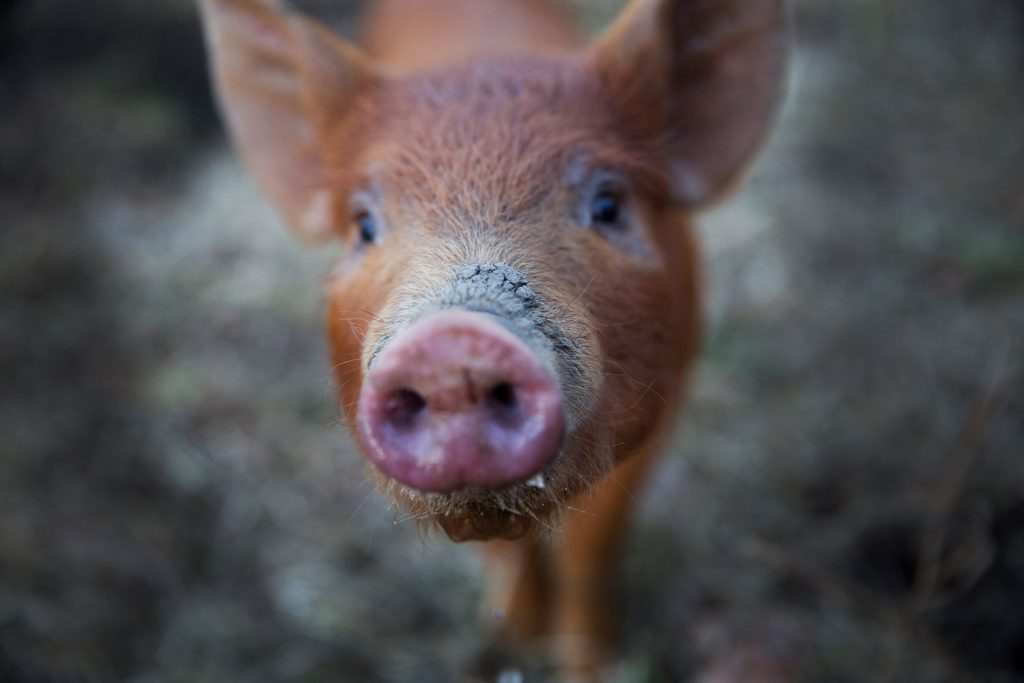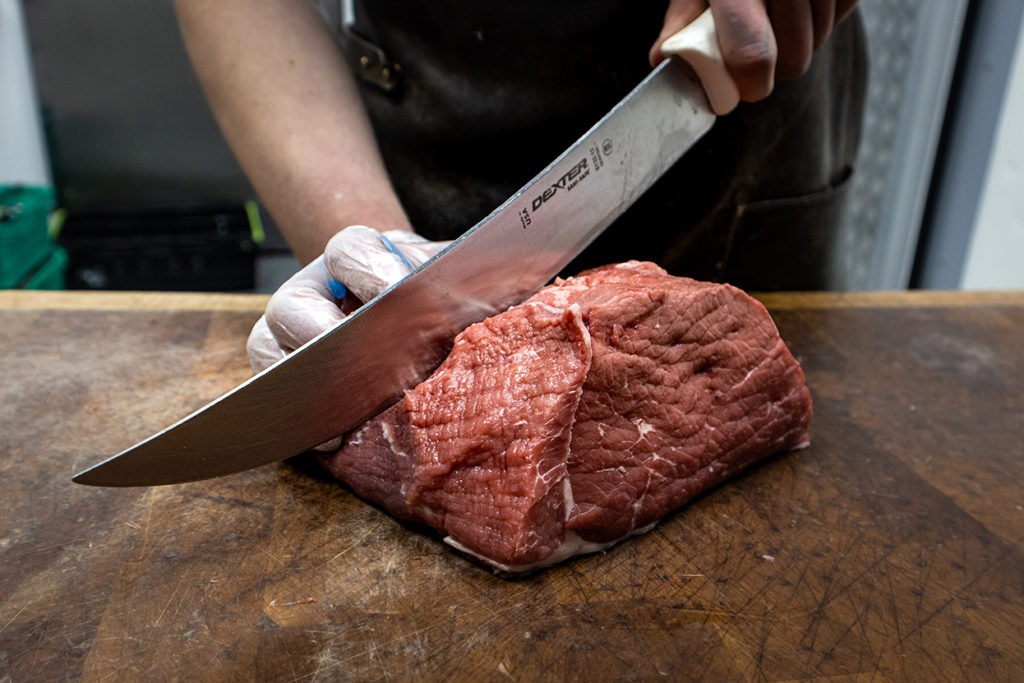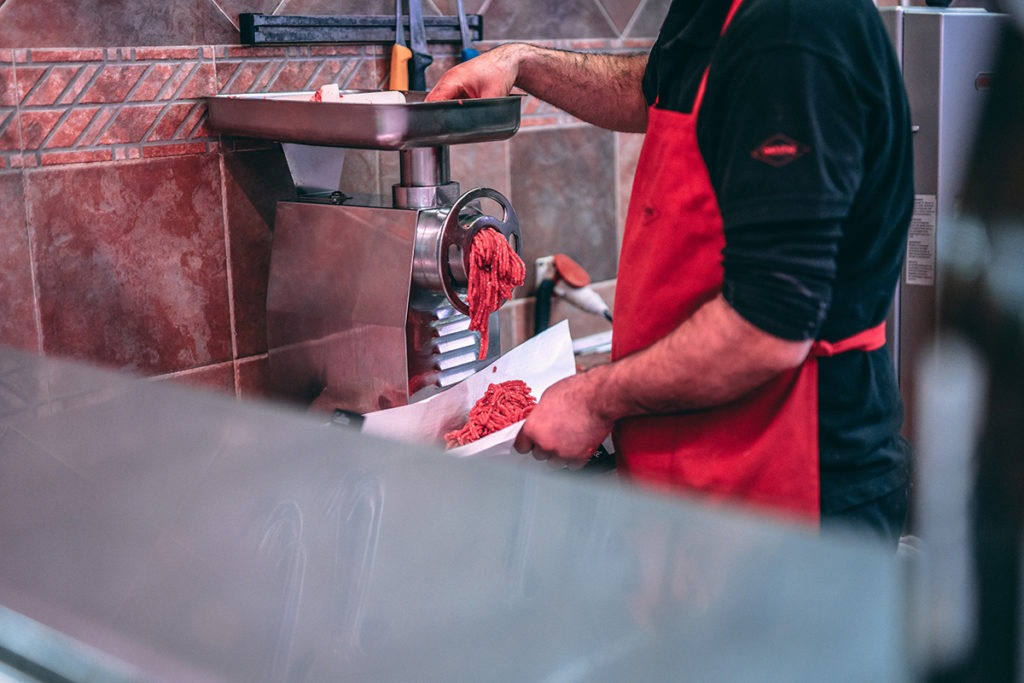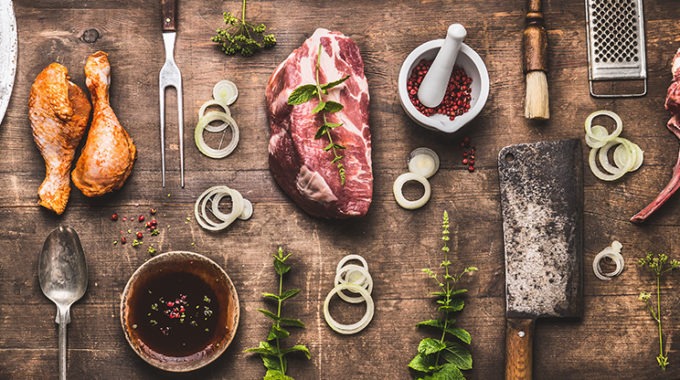Feather and Bone: a better way for meat
When you order wine at a restaurant, your sommelier will no doubt go into great detail about the provenance of the grapes, the type of soil they were grown in, the history of the vineyard and how the wine was made. But when you order a steak or buy meat from a butcher, how often are you provided with that type of info? This is a question that Grant Hilliard would puzzle over as he worked as a sommelier. It’s also what inspired him to create Feather and Bone. This ethical butchery in Sydney only sells meat that comes from pasture-raised animals grown on local regenerative farms, with a focus on heritage and rare breeds.
“When Grant was working as a sommelier, he thought it was curious how people looked at wine,” says Hilliard’s wife and business partner Laura Dalrymple. “They appreciate the ecosystem within which that wine was produced, the genetics of the grapes, the soil quality, the practice of the winemaker. That whole package, all coming together to produce wine with a particular character that you could link specifically to a place and time.
“He wondered why we don’t apply that to any other products we consume. Why, for example, is it that meat doesn’t have any of that same provenance? And yet, when you eat meat, in some ways it’s a much more significant decision. Life is involved.”

A happy accident
This led Hilliard to explore further. Not only why it was that we don’t think about meat that way, but also why it is that the meat we buy tends to be generic. There’s no differentiation from one farm or one breed to another. He then heard a radio program about a particular breed of lamb that, despite being delicious, no one really produced anymore. Out of curiosity, he made some calls and managed to source a few of these lambs. He then rang a few chefs he knew through his work in hospitality. They took the lambs, raved about them and asked for more. Then restaurant customers began asking how they, too, could source this incredible meat. And so, almost by accident, Feather and Bone was born.
Dalrymple, who had been working as a graphic designer, decided it was time for a change. She helped Hilliard to set up the retail side of the business.
“What Feather and Bone was doing was something that really struck a chord in me,” she says. “It answered a need that I had to be involved in something that felt ethically, morally and emotionally right. After working in corporate for so long, I thought you could only change things from the inside. You couldn’t change things from the outside. But when I saw what Grant was doing – this fantastic, tangible, immediate thing. Working with these extraordinary farmers. There was just so much potential.”

Strength in diversity
Over the past half-century or so, agriculture has changed dramatically. With the global market opening up, and distribution now available worldwide, an international food economy has developed. An economy that focuses on quantity over quality.
“It’s all based on bulk, scale and speed,” Dalrymple says. “As the world became more affluent and industrial technology advanced, agriculture followed suit. The breeds that dominate now are ones that have been produced specifically to grow very big, very fast.”
The livestock now produced on a mass scale tend to be the same one or two variants. This has created a kind of genetic monoculture that Dalrymple says is profoundly problematic.
“Diversity leads to resilience,” she says. “In any community – whether it’s microbes in the soil, plants or people – we need lots of diversity to create strength. If everything is the same; if something goes wrong, then the whole thing falls over like a house of cards.”
With animal products being imported and exported all over the world, our increasingly complex food supply chains are fraught with potential problems. And it’s possible that issues such as swine fever and avian flu are just the tip of the iceberg.
“it’s a fundamentally problematic way of growing things,” Dalrymple says. “That’s where our interest in the rare and heritage breeds came from. Partly because we understand that diversity is critical to creating resilient, strong, sustainable ecosystems. But also because it’s interesting, from a consumer perspective; it gives you lots of options.”

A different way of farming
The flavour of an animal that’s genetically robust and allowed to grow slowly to reach maturity, and that is given the freedom to express its instinctive behaviours outside on open pastures, is always going to taste better than an animal raised in a crowded feedlot that’s been bred to grow at a rapid rate.
“It yields a much better product than one that’s been bred to grow so fast that very little personality or character remains in the product,” Dalrymple says.
As Dalrymple and Hilliard worked to source these rare and heritage breeds, they got to know the farmers who produced them. Most seemed to have the same thing in common.
“What we discovered was that the farmers who choose to grow the heritage breeds are largely people who themselves are mavericks; who are choosing to farm in a very different way,” Dalrymple says. “Even though they’re terribly proud of the animal that they’re selling for food, what they’re really focused on is the environment in which that animal lives. Making sure every single aspect of that environment is as healthy as it can possibly be.
“They know that if all of the elements in a landscape are singing together, then the quality and welfare of that animal you’re raising or plant that you’re growing will take care of itself.”

The whole beast
Feather and Bone only sources whole animals from the farmers they choose to work with. While this is partly due to the fact that it makes economic sense for small producers to do so, what makes this more important is that it guarantees the provenance of every part of that animal. It also recognises the value of each farmer’s contribution.
“If you go to most butchers, they might be able to tell you it’s Junee lamb,” Dalrymple says. “But they don’t know anything about how it’s grown. They’ve never been to the farm. They don’t know the farmer, they don’t know how old the animal was or what its diet was.”
Hilliard and Dalrymple didn’t want to do that. They wanted to be able to tell the stories of the farmers they work with to their customers.
“After the animal goes to the abattoir, the carcass is delivered straight to us,” she says. “It’s an incredibly short supply chain. But when the animal arrives, it’s an expression of that farm. You see that in the configuration of the carcass. You see the fat cover, the colour of the fat, the quality of the meat.”
Viewing the whole carcass allows the team at Feather and Bone to become the “eyes” of the farmer. After the animal leaves the farm, the farmer no longer has access. But as Hilliard and Dalrymple have such excellent relationships with the farmers they source from, they can communicate what they see back to them.
“We can say, ‘the carcasses arrived today, and they look fantastic, but this one’s a bit lean. What happened there, what paddock were they in?’” Dalrymple says. “It helps the farmer to understand how their work is expressed.”

Choosing to make change happen
By having the whole animal to work with, Feather and Bone is also able to offer a variety of choices. Meats you’d never find at a regular butcher or supermarket meat aisle.
“It’s so much more interesting than dealing with this narrow palette of cuts we’ve all learned to deal with,” Dalrymple says. “It becomes self-selecting. When a customer goes to the butcher and says, ‘I want chicken breast and sirloin’, the butcher learns that’s what the customer wants. So that’s what he buys in. Then that’s what the customer gets offered.
“The customer is not being presented with anything that challenges their thinking or opens them up to new opportunities. And so both parties – butcher and consumer – their options, their knowledge is narrowed. We become more dissociated from the idea that this piece of meat actually comes from a whole animal.”
The key message behind Feather and Bone is that, when it comes to our food choices, every action and every decision can make a difference.
“If you understand that, you can see how your one action leads to the work that these people are doing on their farms and how transformational that work is, then you can feel really good about that choice,” Dalrymple says. “This isn’t just about animals, this is plants, too. Choosing to buy food from systems that you’ve informed yourself about and which are contributing to ecosystem security and resilience? That’s what changes things.”
Three years ago, Grant Hilliard and Laura Dalrymple released The Ethical Omnivore – a user-friendly recipe and handbook that will open your eyes to a better way to buy, cook and eat meat. Click here for a special recipe from the book.
You can find out more about Feather and Bone and its producers here.









